A reader recently inquired about where they can start learning the basics of financials with absolutely no background so that eventually they can work up to the level of understanding the financial analysis articles I’ve written.
I admit that my articles on how to analyze financials require the basic knowledge of financial statements. So, I researched the highest rated beginner accounting books, ordered them, and read through them to see which one is the best book to start with if you have no accounting knowledge whatsoever.
What I was looking for in my book recommendation was a simple and easy to understand book that still captured the introductory key concepts.
And, after my research and review, the book I recommend for anyone who wants to understand the basics of Accounting but has no Accounting knowledge, is Accounting for Non-Accountants.
Here is what I liked and didn’t like about the book by chapter.
Accounting for Non-Accountants Book Review
Chapter 1 starts with the most basic accounting concept, like who uses it, what is it used for in a business, why you need it. I found this introductory chapter to be too basic, and I think it is a filler chapter. But the chapter is short, so one can skip it if they know the who, what, why of accounting.
Chapter 2 has a good explanation of the Accounting governing bodies, which you need to know if running a business. For example, the governing bodies explained are SEC, AICPA, FASB, IASB, as well as Generally Accepted Accounting Principles (GAAP). So, this chapter is helpful, although I think the reader can skip over this part and come back to it after they learn the Accounting basics first.
Balance Sheet Explanation
Chapter 3 introduces the balance sheet. I like that the book has simple analogies to set up the explanation.
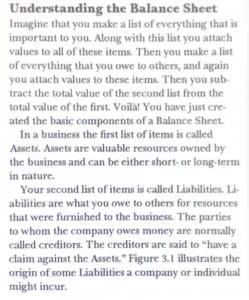
For someone who’s never seen a balance sheet before, the layout of the balance sheet and what items go under each of the 3 sections (Assets, Liabilities, Equity), can be confusing.
So, I like that the book shows easy to understand practical examples of items on the balance sheet.
For example, the book uses an example about the “Solana Beach Bicycle Company,” which is a “small business that makes, repairs, and sells bicycles.”
The book then continues on to make the example more real-life like. It goes on to describe the company’s owner, Sam as “an avid bike rider for many years, [who] felt she could build a bicycle. Sam invested some money she had saved and some that she had inherited into her business.”
After setting up the example, the book goes on to explain each component found on the balance sheet, which is really helpful when setting up a business’s balance sheet for the first time or when learning to read and analyze another company’s financials.
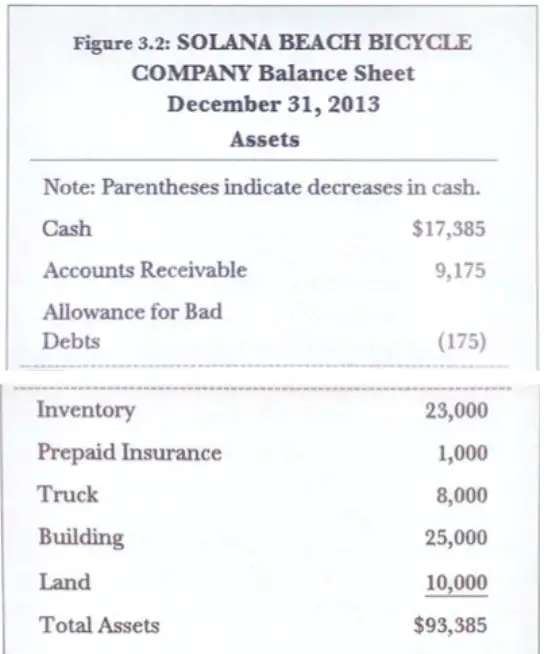
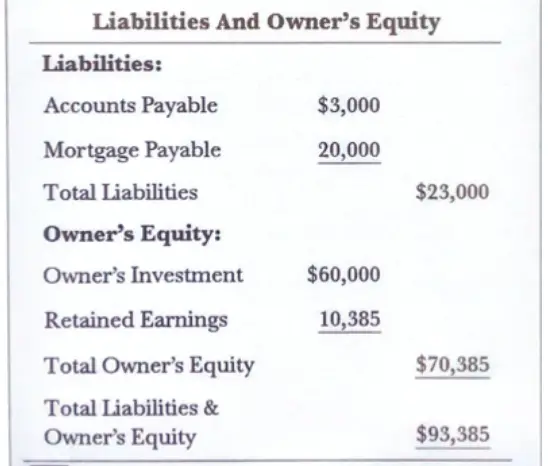
You can read my post on more advanced balance sheet analysis here.
Income Statement Explanation
Chapter 4 talks about the income statement, and the chapter follows a similar structure as the balance sheet chapter. It starts with a short and easy to understand introduction then a real life example of a company, and then a more detailed explanation of each component of the income statement.
The book also recognizes common confusion that non-accountants have and preemptively alerts the reader on things to look out for.
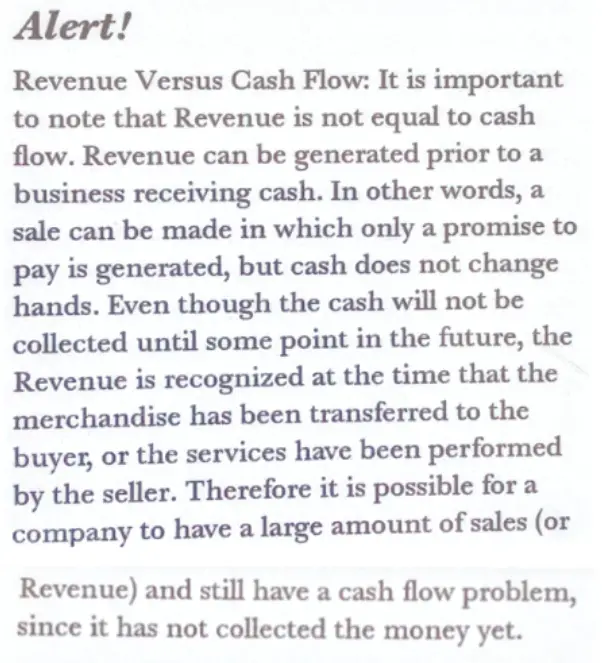 The book throughout also has quick tips that people tend to forget or don’t consider, which I really like.
The book throughout also has quick tips that people tend to forget or don’t consider, which I really like.
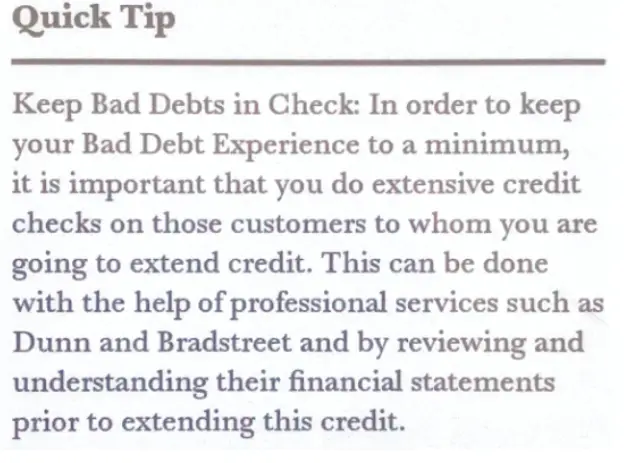
You can read my post on more advanced income statement here.
Statement of Cash Flows Explanation
Chapter 5 then talks about the statement of cash flows, which is a lot of first time Accounting students find the most confusing. In fact, many beginner financial analysts tend to ignore the cash flow statement, and only look at the balance sheet and the income statement.
But in my experience, a cash flow statement is a highly important piece to understand the company’s financial health in real-time when used together with the balance sheet and the income statement.
The book has a good explanation of the components of cash flow statements but one thing that I wish it went into more was how to use it.
Perhaps it is because the balance sheet and the income statement is the most used, so the author didn’t want to confuse the reader too much by throwing too many concepts at them.
For that reason, I think it’s fine for a beginner to get the gist of the statement of cash flows and after getting the hang of Accounting from this beginner book, they can go on to learn more about the cash flow statement.
You can read my post on more advanced cash flow statement analysis here.
Corporation and Double-Entry Accounting Concept
Chapter 6 goes into how a corporation can use dividends. I would say it’s a really good chapter for those to get an understanding of how they should structure a new business and satisfy investors for start-ups.
Chapter 7 talks about double-entry accounting, including the general ledger and journal entries. For a business with an accountant, this content doesn’t come across the desk of a business owner or operator, but for that reason, it’s a really helpful chapter to understand what the accountant or the bookkeeper does in their business.
Financial Statement Analysis for Short-Term and Long-Term
The next two chapters go into how to use the financial statements for short-term and long-term analysis, respectively. This is one topic that a lot of accountants for dummies books miss, and I’m glad to see it in this book. I particularly like that the key ratios are chosen for these chapters, rather than listing every single one under the sun.
In Chapter 8 for short-term analysis, common ratios like the quick ratio, current ratio, inventory turnover, and working capital are discussed. These are definitely a good starting point to understand how to leverage the financial statements to see if a company is in good financial health in the short-term.
In Chapter 9 for long-term analysis, the key metrics and analyses that the book discusses are quality of earnings, rate of return on investment, sales-based ratios, earnings data, long-term debt position, dividend data, and how to use footnotes.
These are really solid choices to begin learning about financial analysis.
Rate or return on investment (or IRR or ROI) is a common analysis for a company’s long-term financial analysis, although when analyzing a company as a stand-alone, it’s not very useful. It’s more useful when you’re making an investment.
But sales-based ratios, earnings data, and the long-term debt position are all very important metrics. I particularly like that the author included debt as one of the short-listed key analysis, because it’s good to ground a beginner on the crucial importance of having too much debt on the books.
Budgeting and Planning Process Explanation
Chapter 10 is a pleasant surprise as it gives an overview of the budgeting process and the importance of financial planning for your business.
Many entrepreneurs I know have 5, 6 figure businesses but don’t have financial statements and have never budgeted. It makes life so much easier if you start with budgeting and accounting at the start of a business rather than trying to finagle after you’ve already been in operation for a number of years.
I like like the author’s diagram of a “Master Budget”, which shows that a business needs to have a budget for each function of the business and they are all interconnected to show you the big picture of a business’s budget as a whole.
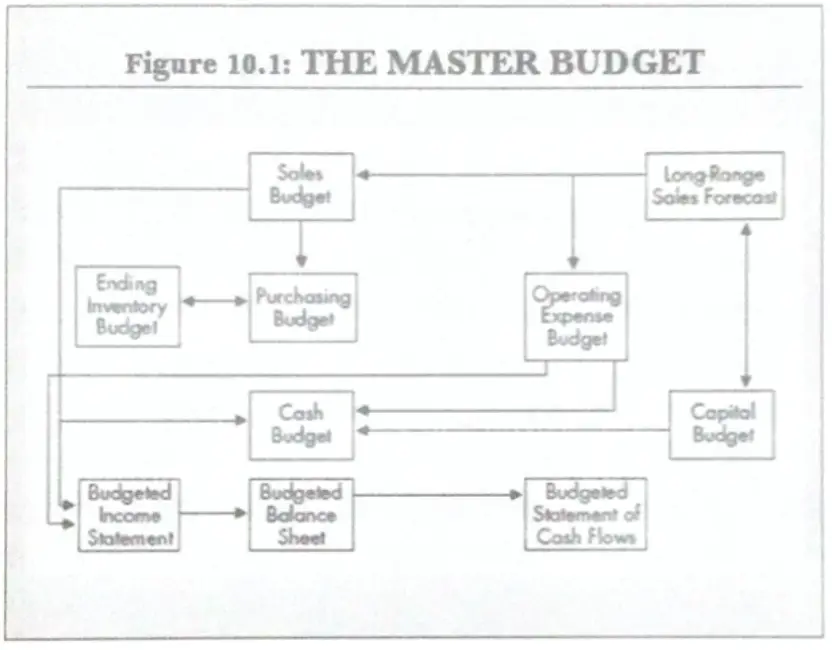
One thing that the author warns the readers, which I totally agree with, is that “most small businesses that go out of business do so not because they lack a good product or service, but because they have not planned well and have run out of cash. Preparing a budget can help avoid this undesirable end”.
My favorite part of this book, which I applaud the author for, is dedicating a section on “cash budget” and how to create one in this chapter.
Many accounting books don’t mention a cash budget and they certainly don’t go into this level of detail on how to calculate the ending cash balance for your cash budget.
From my professional experience, one of the most important financial forecasting that I created and the team relied on was the cash budget.
Audit and Accounting Ethics Explanation
Finally, Chapter 11 describes what an audit is and what auditors do, and Chapter 12 goes into fraud and ethics. Particularly, how fraud is committed, why employees might steal, what you can do to prevent fraud in your organization, and overall business ethics.
These final chapters are good to be aware of for anyone involved in business.
Summary
Overall, I highly recommend Accounting for Non-Accountants for absolute beginners with no Accounting knowledge who need a starting point. 
If you found this review helpful, consider sharing it with anyone you know who you think should get basic knowledge of Accounting. And, if you have other books you want me to review, please leave me a comment!
